Castles Of Serbia
Marczibányi- Karácsonyi Castle
Sremska Kamenica
In Kamenički Park, one of the favourite picnic spots of Syrmians and Novi Sad residents, there is a large castle that today has a completely prosaic purpose. But, it used to be an impressive castle of count families of the Hungarian nobility, first Marczibányi, and then Karácsonyi. It was being built from 1797 to 1811. The castle is unique in that it is the only or one of the few castles in classic style whose base is not symmetrical.
It all started back in 1745, when General Baron Uffeln decided to move the headquarters of his estate from Karlovci to Kamenica. As early as 1758, the estate was taken over by Count Lőrinc Marczibányi and the following year he built a small summer house for himself. He came to Kamenica to improve viticulture in freshly liberated Syrmia, which was once a famous wine region, but during Ottoman rule, viticulture was banned and almost forgotten. Count Marczibányi wanted to bring new experiences from Hungary, and later a small castle would be built by him on this place. They were originally from the town of Púchov in the Czech Republic, and the famous member Livius Marczibányi already had his property in another viticulture centre, Čoka. The Marczibányi family also had a castle there.
In the middle of the 19th century, Count Guido Karácsonyi from Beodra married Countess Maria Marczibányi, and got this castle as dowry. This happened in 1836 and Karácsonyi came when everything was ready, having in mind that the Marczibányi family had already developed viticulture so much that they exported wines to Pest and Vienna as well. In 1810, Márton Marczibányi had already renovated the castle once and enlarged the park and garden. Although Márton died as early as 1834, he is actually credited with the present-day appearance of the castle, as he profiled it as a monumental two-storey building. The northern part of the first floor (wing) was added, and an English landscape park was built. This is evidenced by the inscription on the sculpture “Sphinx” from 1834. Márton is inherited by the minor Livius, but he was too young to take care of the estate, so his sister Maria married the mentioned Guido, and the castle became the property of the Karácsonyi family. From that wing, which is larger than the rest of the castle, the counts intended to observe the sunset over Petrovaradin and the Danube, which can still be done today.
The Karácsonyi family was already extremely rich, since they were winegrowers and already had two castles in Beodra (today part of Novo Miloševo), while in Buda they had a large family castle. In fact, they stayed in Buda for most of the year, and they came to Vojvodina’s castles in the summer and during the grape harvest. Guido was a great friend of Franz Liszt. Count Guido Karácsonyi became a famous Syrmian winemaker and the surrounding landowners and winegrowers came to the estate to taste high quality wines, and he tried to impress his guests. He invited all the most famous landscape architects to build a park on his property, and they did so, and that is today’s Kamenički Park. It houses an ensemble of sculptures that has not been completely preserved. Guido’s son, Count Eugen Karácsonyi, was the last owner of the castle, which was nationalized in 1920 in a new state, and became state property.
As the Danube tends to flood Kamenica below the castle, the purpose of the park was to allow a naturally high water level and to channel it. Trees from almost all parts of the world were planted in the park, which was a fashionable custom at the time, and walking paths, equestrian paths, benches, fountains and other “equipment” of the park were built, according to the highest European standards. An obligatory artificial lake then was made. The most important sculptures found all over the park were “Five Heads” (partially preserved), “Pompeian Pillar”, “Lying Girl”, “Sphinx”, “Adam and Eve” – which do not exist today. Only broken parts of these statues can be found scattered in the bushes. Also, flower roundels were destroyed.
As for the castle itself, it unites four connected buildings, and they form an atrium courtyard. Upstairs is a dominant colonnade with double pillars of the classicist Doric type, with classic ochre and white colours. The hallway is connected to the main hall, which used to be a ballroom, but still serves for gatherings today. There are also auxiliary facilities, which were built around 1850, and the Kamelienhaus stands out, a building which, as its name suggests, was used for growing camellias. There were also stables and storage for boats. It simply became residential today and does not preserve its authenticity, since it has been changed beyond recognition. Even today, above the entrance, there is a plaque on which it is written that the castle was built by the noble family Marczibányi de Puho, as well as the family coat of arms on the northeast side. King Philip of Spain stayed in this castle.
As for the vicissitudes of ownership from 1919 until today, then it was adapted into the Home for War Orphans, and in 1928 it became the School for Housewives. During the Independent State of Croatia, a group of Croatian refugees from the then Italian Dalmatia was housed here, and in 1956, the purpose of the castle was changed once again and it became the Secondary Horticultural School, and for a time a cinema was housed here. Today, the castle is leased by Vode Vojvodine (Waters of Vojvodina), until 2050, and there are also the Republic Hydrometeorological Institute and the Documentation Centre “Nikola Mirkov”.
There are various legends about the castle. Milan Belegišanin in “Dreams of Grassy Towers” says the following: “Countess Hanna Tomaszewska of Kraków stayed in Novi Sad for about ten days on her journey through Europe in 1911. The young doctor Jovan Popović was there to be at her service. On the last day of the Countess’s stay, the young man decided to row across to the Kamenica bank, so that he could wet his whistle with some more mature, Polish-aristocratic blood in the shade of the Danube willows. It was the end of September. Indian summer. Day warm and hot for a while as the Countess herself. The boat was tied to one of the willows and at the moment when the young doctor wanted to convey the story of farewell and false promise from the countess’s neck to her chest, a song was heard. A very old man was walking along the shore and plucking some grass growing in the shallows. They were not so much surprised by the age or the raggedness of the man as by the creepiness of the melody that came out of his mouth. One thing particularly impressed the young doctor — though the old man walked the muddy part, right next to the water he left no trace. The old man looked at them only once and said: “Go. It will be dusk soon, and then the song of the dead will begin. Today is their centenary. “
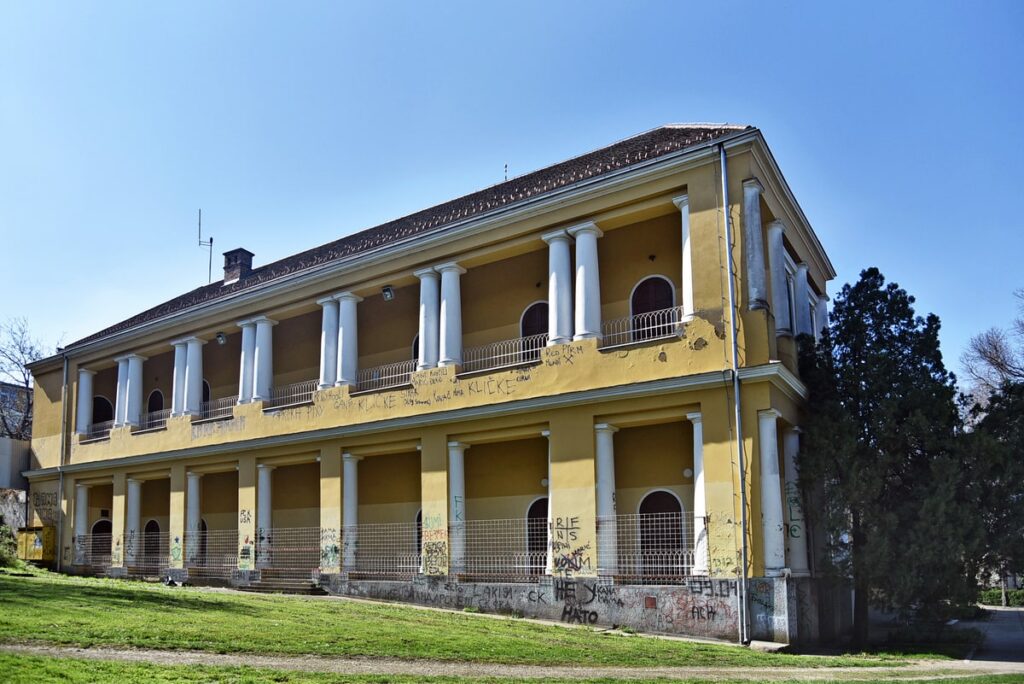
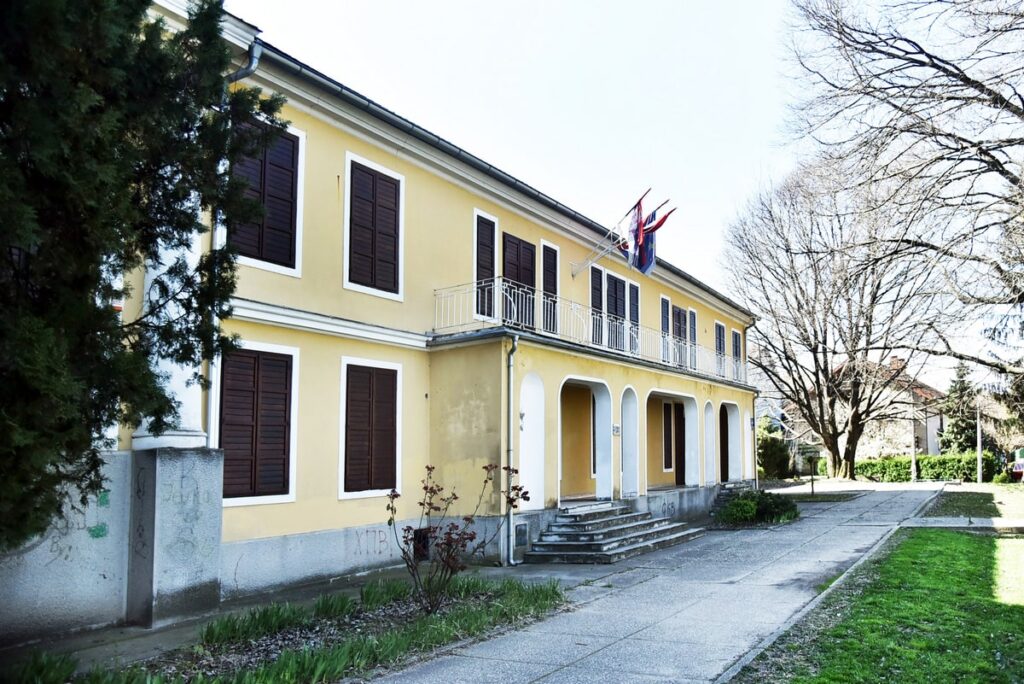
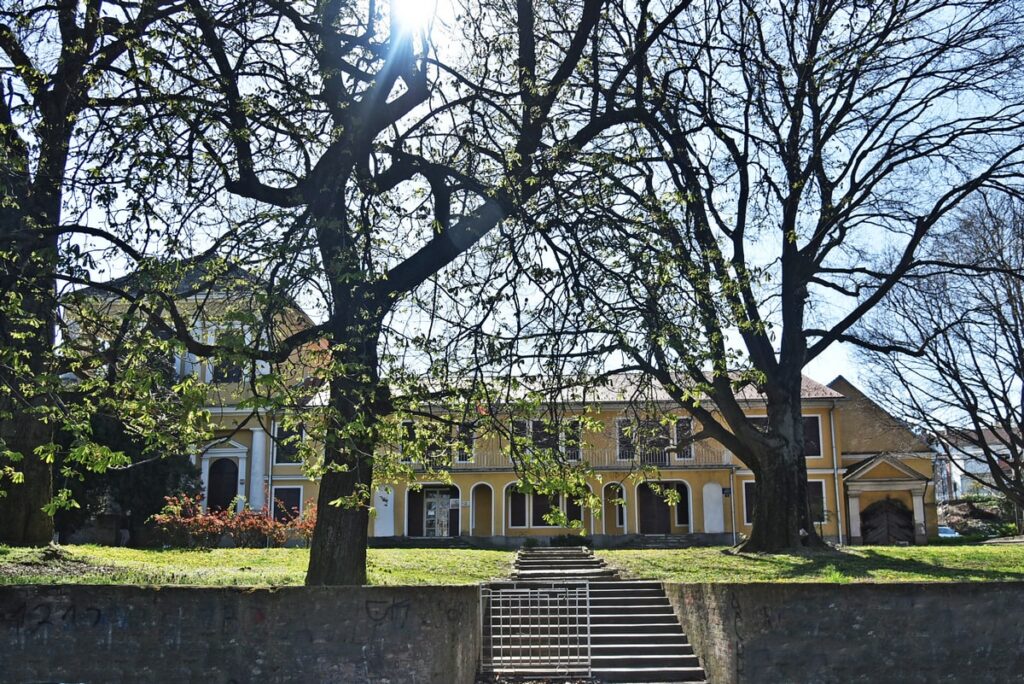
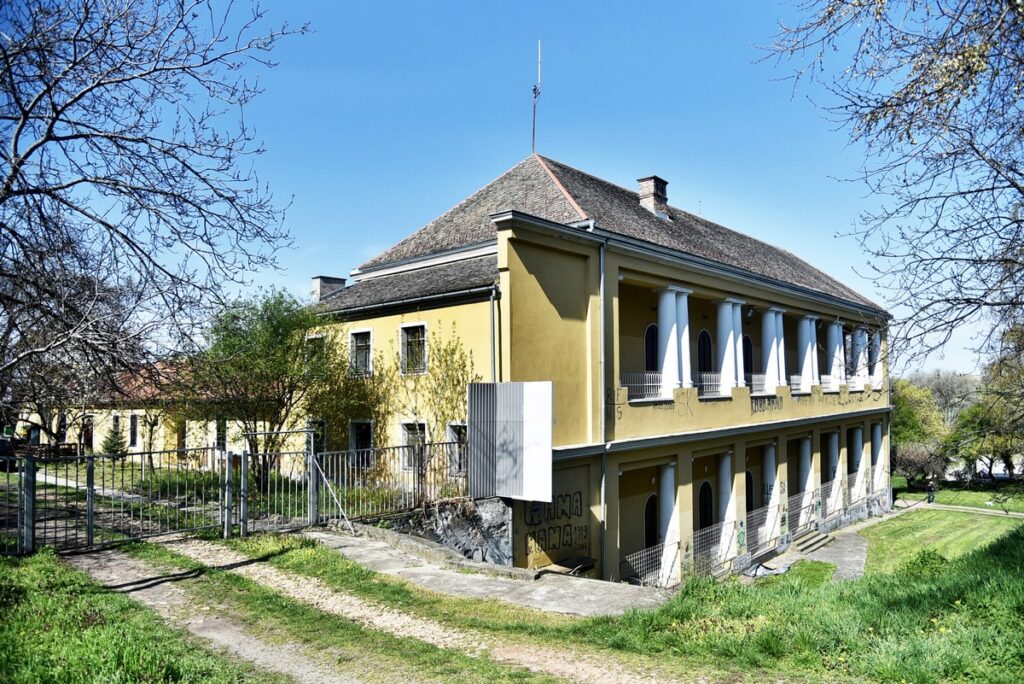
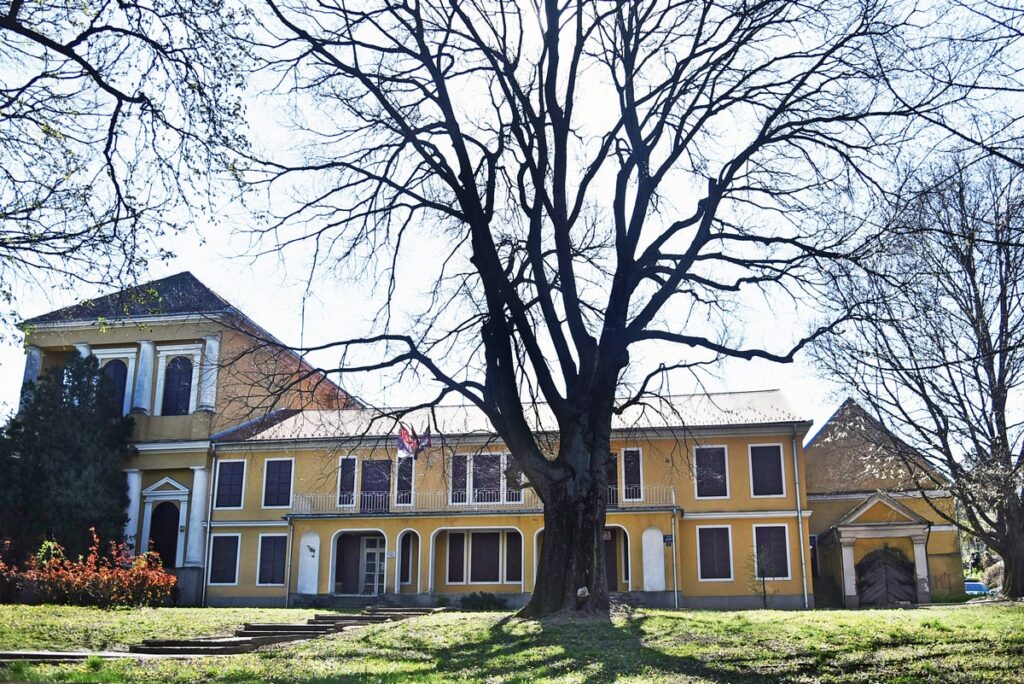
The countess and the doctor left with an unspoken farewell, and the doctor wrote all this in his diary after a while. It seems that in that record there were more regrets for the unreached body of the countess, than questions about whose centenary it was all about and what kind of song was excepted by that old man who walked in the mud without leaving a trace in that Indian summer twilight.
Karácsonyi Castle in Sremska Kamenica was built from 1797 to 1811. During those 15 years of construction, the Danube every year on the “Kunin Summer” (time of the year the water level is the highest and when, according to tradition, swimming is prohibited) “took” one worker. But one of them, so sweaty, would always try to bathe in a pregnant, rampant river, without caring about Kunin. It is interesting that no one’s body has ever emerged. The people recounted that the great river god kept them with him, so that these diligent infidels would build him a beautiful building, the same they built on land.
After the castle was built, two of Karácsonyi ‘s nephews with their families moved in. But, it should also be said that every year on the Kunin summer, a song of drowned builders came across the water, together with the south wind, announcing autumn, rain and disease. The Countess of Krakow and the young doctor wanted to perpetuate their short acquaintance, on the centenary of the completion of the castle and the centenary of the last drowned builder. The first inhabitants of the castle in Kamenica were very prone to sickness. After all, it is believed that the owners of castles by the water were doomed to two things – wisdom (which often bordered on madness) and premature death, which was most often caused by tuberculosis. The cause of wisdom was probably the Danube, which warns with its inevitability, and the cause of the disease was their masochistic infatuation with the river. The Danube does not succumb nor can stand lovers. It is looking for a tribute … The Danube is possessive, and to the intruders, instead of its invigorating scent, it offers moisture in the bones. The owners of Karácsonyi Castle were wiser and more enterprising, but only until they were 50 years old. Later, wisdom turned into madness, which was always interwoven with tuberculosis and short lifespan.
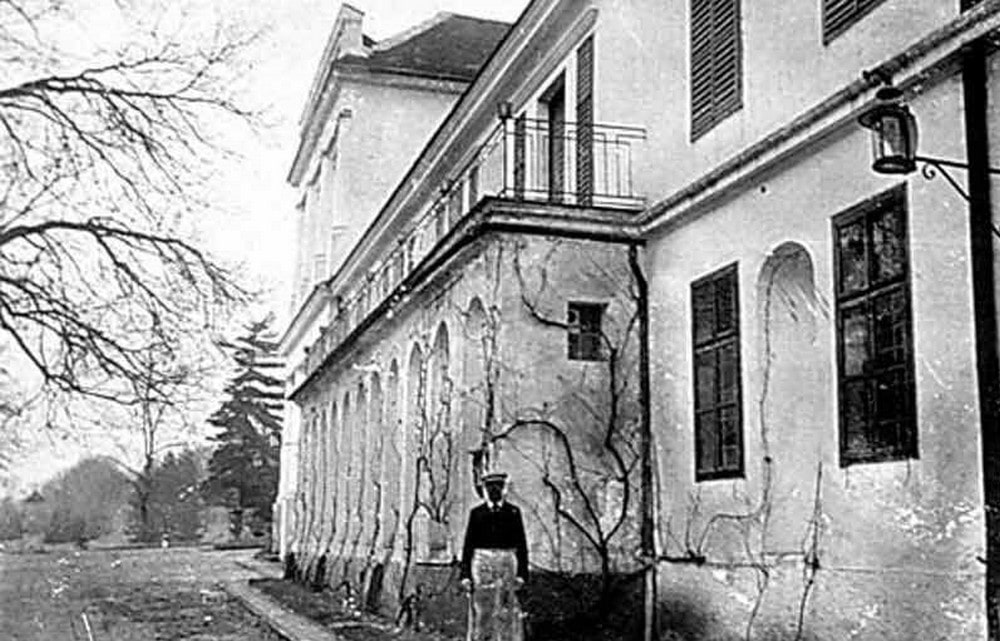
The family doctor of the Karácsonyi family branch in Sremska Kamenica wrote that they were especially sensitive to the smell of ozone after the rain and to the warm south winds coming from the Danube. Another interesting thing: everyone suffered from identical auditory hallucinations. As soon as summer began to dive in the autumn, they would often put their hands over their ears each twilight. But even that didn’t help them. In September and October, every time, after the rain, they would sit curled up in the corners of their rooms, and then put smelling salt and vinegar in front of their noses, just so they wouldn’t smell ozone scent. After a while, the wind would, according to them, bring some sounds only available to them. Soon after, they would start coughing. Sometimes the herbalist Andrija also came to visit the nobles. Nothing was known about that man – neither where he lives nor how old he is. He was said to have been born old and aged. He was so thin and light that he could not be heard walking through the corridors of the castle. The Karácsonyi nephews would only notice him when he stood right next to them, or when he put his puffy hand on their shoulder. Andrija would often say that the cure for tuberculosis is tea made from mixed forest herbs. These herbs are harvested both on the banks of the Danube and in the woods, but everyone must pick their own medicine and make it themselves, in order for this one to be effective. But the nobles did not listen to him. The reason was not that they did not believe Andrija, but because they were afraid to go to the forest or to the river bank.
What if they get caught in the woods by the rain, the ozone gets stronger, and they don’t have rooms in whose corner to curl up. On the other hand, the Danube has embedded in itself the song of the dead builders, which calls itself so sweetly and enticingly. If he failed to persuade them, Andrija would leave and not much time would pass and somewhere a song identical to the one that would be brought by the south wind from the Danube every Indian summer would be heard from the Kamenica forest. During the reconstruction and upgrade of the castle from 1834 to 1836, until 1850, until the economic facilities has not been fully completed, white silk handkerchiefs with bloody sputum could be found in many cracks in the walls, and under park trees and in the ferns. This would be the end of the story about Karácsonyi castle in Kamenica near Novi Sad. Perhaps we should add this: Doctor Jovan Popović ends his diary with the information that Countess Ana Tomaševska from Kraków never arrived in Poland. When she returned to her country, she fell ill and soon died in Szolnok, Hungary, where she was buried. Eyewitnesses reported that everything happened in a few days. They say that she began to cough up blood suddenly …”
Marczibányi – Karácsonyi Castle has been declared a cultural and historical space complex and is under state protection, and it would be good to buy it from Vode Vojvodine, to which would be provided better space, and the castle itself should be used as a hospitality facility, such as Ečka Castle. The castle is a cultural monument of great importance.
This project was supported by the Ministry of Culture and Information of the Republic of Serbia.





